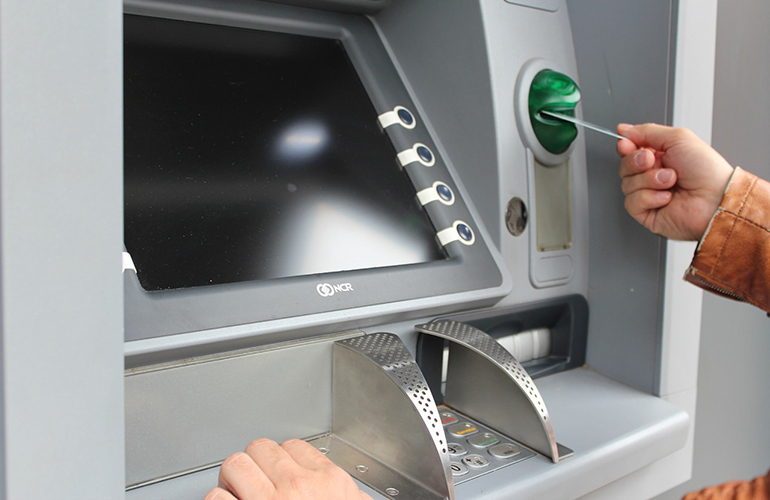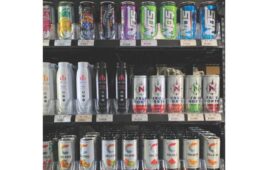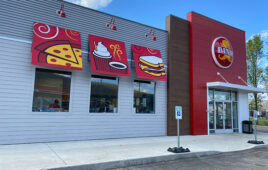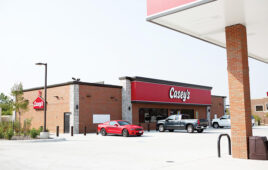 It may seem like American consumers brandish debit or credit cards like Wild West gunslingers. The truth is, for most purchases, cash still reigns.
It may seem like American consumers brandish debit or credit cards like Wild West gunslingers. The truth is, for most purchases, cash still reigns.
Nearly half of all transactions under $25 are done with cash, according to 2016 preliminary figures from the Diary of Consumer Payment Choice. The U.S. has the highest number of ATMs per capita in the world.
Simply put, people trust cash.
That’s especially true of independent ATM users, who statistically have lower incomes, higher unemployment, lower home values and less college education. Most of those cash machines are in convenience stores, according to the “2018 Locational Study of ATMs in the U.S. by Ownership.”
Surcharge-Free
ATM fees, like surcharges and bank fees, run the risk of alienating these users and sending them to another business to get and spend their cash.
Banks often charge non-network fees ranging from $2 to $3.50 — often without telling the consumer. When the fee appears on the customer’s statement, it’s listed as an “out-of-network” fee.
“Well, here’s the poor store owner and ATM guy — they have to buy the machine, keep it working, keep it loaded — it’s a costly thing,” said National ATM Council (NATMC) President Bruce Renard. “The bank does a millisecond electronic transaction that costs nothing, and they’re charging as much or more than the ATM guy, and their (fee) is not disclosed.”
Advocates for independent ATM owners say the practice is intentionally misleading and implies the machine owner took the fee rather than the bank. Those same advocates point out that financial laws and regulations are increasingly favoring the bank-owned ATMs.
Some c-store operators look to compete by dropping their ATM surcharge. The idea is to attract so-called “surcharge avoiders,” who’ll spend more in the store more often. That added income would have to offset the loss of surcharge revenue.
It’s About Networking
Of the 17 or so large ATM networks in U.S., the two largest non-bank networks are Cardtronics, with more than 100,000 machines under the Allpoint Network brand, and Fiserv, operating more than 70,000 ATMs under the MoneyPass brand.
They boast surcharge-free networks, serving some of the largest retail outlets in the nation.
For those retail outlets, the service is turnkey — the c-store performs no maintenance. It simply collects a cut of the network fee revenues.
North America’s largest c-store chain, 7-Eleven, which has more than 11,600 stores in North America, signed on with MoneyPass in May 2018, rolling out nearly 8,000 surcharge-
free ATMs.
Late last year, Toronto-based Parkland Fuel Corp. renewed its agreement with Cardtronics Canada to maintain its 208 ATMs and add another 280 cash machines, bringing to 486 the total of ATMs across Parkland’s Corner store, FasGas and Pioneer stores in Canada.
The chains still receive revenue and the benefit of customers in their stores with cash in hand.
But for smaller retail operations, installing an ATM requires an upfront purchase of a machine and operational costs. The surcharge offsets those expenses.
For Brent Mouton, CEO of Hit-N-Run Food Stores, the fee method is simple, and dropping the surcharge just doesn’t make sense.
“I’ve talked to some people that have done it, and you didn’t gain enough to offset what you made on the surcharge,” he said. Across Hit-N-Run’s 11 convenience stores in Louisiana, every location collects the same surcharge. The actual charge amount is reviewed regularly with the ATM network’s input.
Another option is a floating surcharge, according to economist Calum Robinson in a 2018 ATM Marketplace article, “How to Become a Surcharge Heavyweight.” Some independent ATM advocates are touting technology that allows the amount of the fee to fluctuate depending on time of day, local events taking place, number of nearby ATMs and other factors.
Biometrics
Cardless technology is already in use around the world and will see an increase in the U.S. in the near future. The trend is seen as a more secure way for consumers and financial companies to do business.
Instead of using a card, ATM user identification is moving toward biometrics — much like using fingerprint touch authorization to access a cellphone.
The most popular biometrics methods are a multiple-fingerprint scan, finger-vein scan, palm scan, iris scan and facial recognition. Biometrics can also be used as just one piece of multi-factor identification, perhaps using it along with a card, PIN or both.
Renard of NATMC said the four-finger method is the current favorite.
Plus, the scan is encrypted as a one-use digital code, not an image — so it can’t be stolen and used again, as can the data from a magnetic stripe or a PIN.
Biometric ATMs are already in wide use in Japan and gaining in numbers in Mexico, South America, Africa and the Middle East.
━━━━━━━━━━━━━━━━━━
More Than Just Money
Look for ATM service advances in the next two years to include an array of functions, some that have little to do with dispensing money. For example, ATMs may be able to:
- Sell e-gift cards that can be loaded onto a cellphone or sent via email as a gift.
- Distribute product rebates and frequent shopper rewards either in cash or to a cellphone or other device.
- Offer no-contract cellphone top offs.
- Facilitate sportsbook betting in states that allow wagering outside of casinos.
- Allow transactions using cryptocurrency. For example, Bitcoin ATMs are gaining traction with thousands already deployed.
- And gaming kiosks modeled on ATMs will be able to dispense cash prizes.




